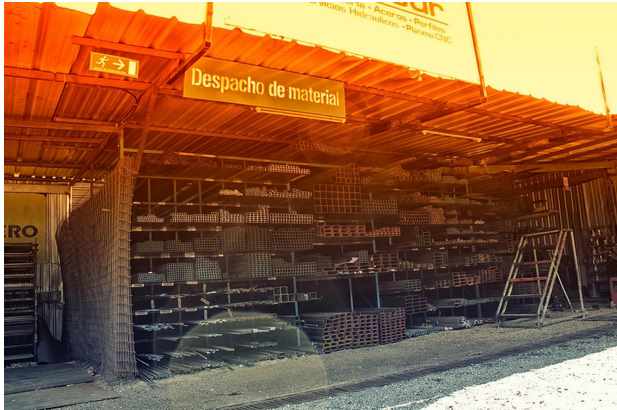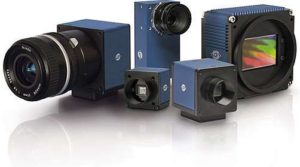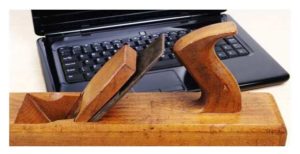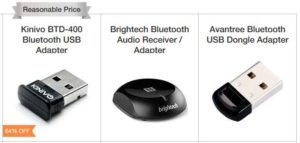Common Applications of Aluminum Extrusion Profiles
Technological developments have affected every industry, and few sectors have transformed as much as the manufacturing industry. From new processes to updated machinery that gets jobs done quickly, emerging technologies have rapidly enhanced the industry’s operational efficiency.
One such development that’s changed things is aluminum extrusion. Aluminum extrusion is the mechanical process of forming aluminum to change the shape and appearance of the metal. The extrusion process requires an aluminum billet or ingot, which is ideal for extrusion due to its malleable properties.
The market share of aluminum extruded profiles has increased from 29.21% to 34.17% in 2016-17. Due to their cost-effectiveness and utility, they are likely to acquire a bigger proportion. If you’re interested in this manufacturing process and are wondering how it can help you, here’s what you need to know:
Process and Conditions
The extrusion process is carried out with dies and two temperature conditions, hot and cold. When heated to a specific temperature of 660°C, it becomes soft and hence passed through a pressing vessel that applies more significant compression to mold it into the desired shape. The cold method involves cooling the material at room temperature to pass through a die, allowing it to acquire specific profile shapes.
The process requires vigilant supervision since aluminum loses its strength if it surpasses optimum temperature. Ergo, to get the desired shapes and features, you should monitor the extrusion process carefully.
These are passed through smaller dies, which elongates the metal. After intense compressions, the metal strengthens because of molecular reshaping. Thus, establishing the point that the shape of the end-product determines the properties of the extruded aluminum.
Extrusion improves these aluminum profiles’ properties and offers fine quality of end-products compared with other processing methods. Typically, extrusion tooling costs around $500-5,000, whereas other methods such as stamping and roll forming cost $5,000 and $25,000, respectively. Extrusion products have better surface quality and dimensional precision.
Types of Profiles
There is an extensive range of aluminum extrusion profiles, varying according to molecular reshaping and user end application demands. These can be complicated and involve intricate geometry or straightforward, such as simple shaped bars, L shaped bars, single radius bars, tee bars, etc.
Surface Type
There are often subsidiary products in the extrusion process that are tiny, hardly visible lines present on the profiles’ surface. A secondary surface operation can eliminate these. It’s a necessary step to improve the geometry and reduce the roughness of the profile, and can augment the profile with additional corrosion resistance.
Advantages of Aluminum Extrusion Profiles
Aluminum extrusion offers several advantages, including:
Good Conducting Properties
Compared to other metals, aluminum extrusion profiles provide several specific advantages. This material is an excellent conductor of heat and cold, aside from being lightweight and stable. Extruded parts and components make a perfect option over copper for that purpose.
Oxide Coating
Moreover, since this material has a naturally occurring oxide coating, aluminum extrusion companies may provide a range of finishing techniques. Some of these include powder coating, painting, and anodizing.
Non-Magnetic
Aluminum extrusion profiles are non-magnetic. This makes them viable for high voltage applications, which is why electrical systems use them. Their non-sparking nature makes them a safe option when used in flammable circumstances.
Optimized Designs
Apart from weight savings, aluminum extrusion profiles offer other benefits. Profiles and components can be designed to integrate additional features. Interlocks, channels, and repairing can be further accentuated in utility. With the advent of novel techniques, you can achieve much more effectively and efficiently. Hence, custom-made manufacturing can offer better design-optimization for the finest solutions.
Environmental Friendly
Another essential advantage of aluminum extrusion is that it is utterly recyclable. In contrast to other recyclable materials, aluminum, when recycled, holds fast to its original compositional properties. Its scrap only takes 5% of the energy that was required to manufacture the metal initially. Thus, further lessening the costs. It is a thoroughly environmentally friendly product line.
Applications of Aluminum Extrusion Profiles

Aluminum extrusion profiles have a variety of uses due to its favorable properties. Some of the most common applications include:
Construction and Architecture
In construction, extruded aluminum withstands disfigurement caused by various reasons. They are used in ladders, elevator shafts, building skeleton and structural, mechanical usages, etc. These profiles, due to their flexibility, can combat high loads and shock impacts.
Similarly, these have applications in architecture that stretch from railings to bleachers and canopies. Extruded aluminum provides a classic feel to interior designing. Its thermally improved composition doesn’t allow heat to transmit through curtain walls. According to Grand View Research, the construction and architecture application of profiles is 60%, whereas the rest of the applications are 40%.
Display Apparatus
Quite often, in temporary set-ups and exhibitions, building frames are constructed with extruded aluminum profiles. A wide variety of intricate geometry allows different profiles to interlock swiftly. Moreover, these structures are easy to shift around and depict an aesthetic appearance. These are also used in showcasing, picture frames, and inventory cabinets.
Electrical Application
Extruded aluminum is an efficient conductor of heat and is used in electrical panels and other electrical systems. Moreover, with proper shaping, it’s an outstanding radiator that deals with thermal management. These are also used in support structures of solar panels.
Industrial
Nearly every industrial structure uses aluminum profiles in different sections, whether it’s working benches or bars built for machine guarding. Its ability to be rust and corrosion resistant and its tangible lightweight nature offers excellent value for money.
Transportation
Weight management is a critical aspect of transportation, and whether it’s airplanes or trailers, weight is a significant issue. These aluminum profiles fulfill the requirements of the transportation industry. Trailers, cabinets, and shelves also use extruded aluminum profiles to be lightweight with uncompromised strength.
Miscellaneous
Other applications of extruded profiles include:
- Covid-19 products (desk guards, sneeze guards, etc.)
- Carts, Conveyors and Enclosures, etc.
- Router Sled Kits, Lean Manufacturing, and Perimeter Wall-sections, etc.
- Fence, Assembly Line and Aluminum Board Framing, etc.
- Custom Made Aluminum Profiles (Alloy, Ceiling, Awning Windows and Bicycle rims, etc.)
Final Thoughts
Today’s engineers demand material that’s strong, cost-effective, and efficient in properties, and extruded aluminum profiles have all of these qualities. Aluminum extrusion is also the most feasible option that satisfies the unique manufacturing needs of design flexibility, cost savings, and product efficiency.
As we have elaborated in detail, these profiles offer everything that optimizes the utility of its application. Its lightweight nature, upholding strength, and corrosion-resistant nature increases longevity and durability. It has inexpensive tooling, and there is no need for welding. Moreover, it depicts a good appearance as it can be painted and plated.
All in all, lately, in pursuit of miniaturization, the applications of extruded aluminum profiles have increased significantly, and we’ll continue to see new developments.








